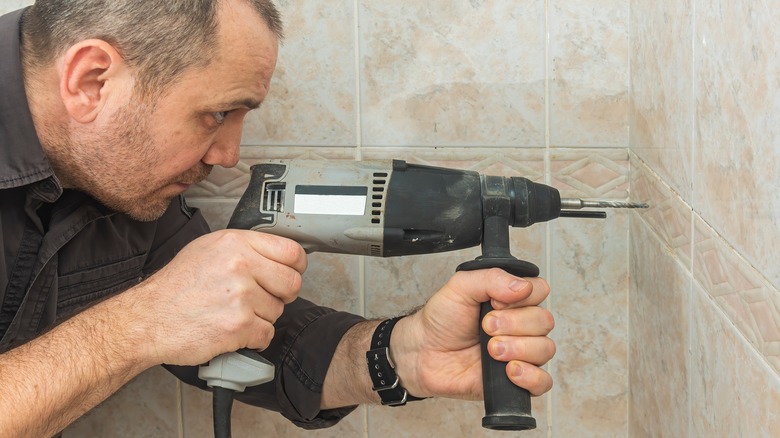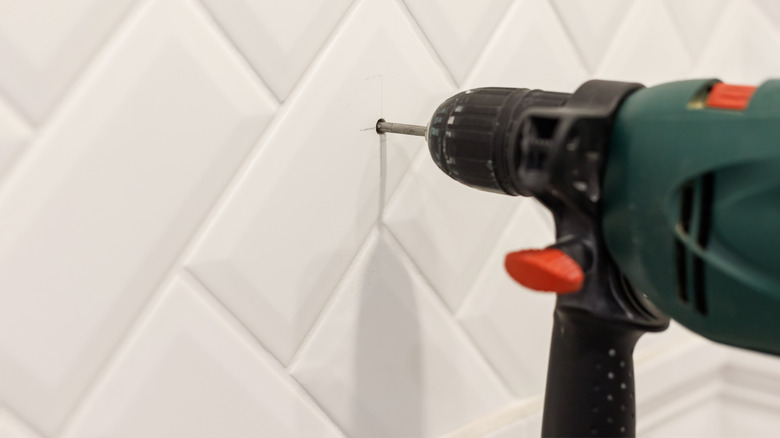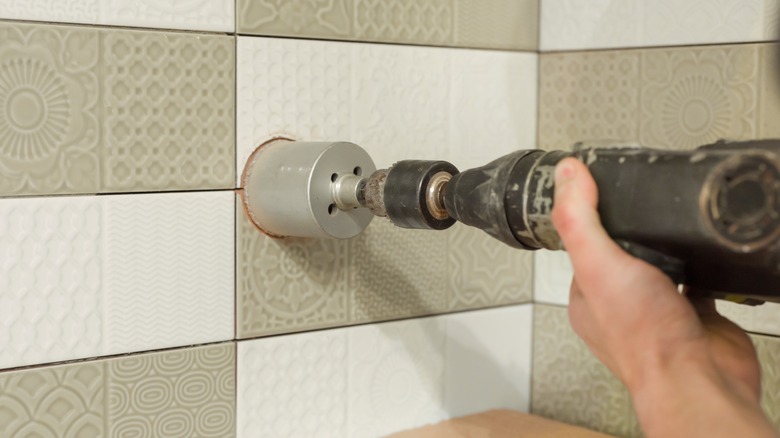Can You Drill Through Tile Without Cracking It?
When remodeling a bathroom, you may need to learn how to drill through tile. If you have tile surrounds, walls, or floors, hanging towel bars at just the right height or doing a job that requires moving plumbing pipes may require you to place a hole in the tile to attach these items. Unfortunately, creating a hole in ceramic is not as easy as successfully drilling holes into metal or wood, as tiling can be brittle, increasing the possibility of cracks and breakage. Still, you can drill into this material without cracking it if you use the right drill bit and use plenty of caution.
If you're trying to create a hole in a tile installation that someone else installed years ago, you may not have access to replacement pieces. Creating an unwanted crack or knocking pieces off the wall during your remodeling job could leave you unable to salvage the tiles, creating additional expense and work. In other words, undertake this job carefully.
As with most jobs, making sure that you have the right tools on hand will give you a far better chance of creating the hole without causing cracks or breaks. If you can't justify purchasing the tools you need because you only expect to use them once, consider renting them from a local hardware store or borrowing them from a neighbor. Don't try to tackle this job with the wrong tool or the wrong size drill bit.
How to drill a small hole in ceramic tile
For mounting things like towel racks, small shelves, toilet paper roll holders, soap dishes, and toothbrush holders, you can use a small bit to drill a hole in the ceramic tiles. This serves as a pilot hole so you can mount the piece with screws. Never try to screw directly into the ceramic without creating the pilot hole first — you will almost certainly crack the tile. If at all possible, place the hole in the center of an individual piece rather than toward the edges to reduce the risk of a crack. Try to drill into a wood stud behind the ceramic wall for additional support for your screws.
Rather than using a typical bit that's suitable for wood or metal, you need one that's usable with ceramic. To save some money, you can use a carbide-tipped bit rather than one that's diamond-tipped. If you're working with a material harder than ceramic, such as marble, porcelain, glass, or stone, stick with the diamond-tipped model. When activating your power drill with the appropriate bit, drill slowly.
Finally, it's important to measure as accurately as possible before making the pilot holes. You don't want to try making holes in this type of material more than once because you made a measurement error. Use a level to double-check that your measurement marks are perfectly straight before you start the process.
Creating large holes in tile for plumbing
When need to add plumbing pipes during a bathroom remodel, you may need to drill through a floor or wall where an existing tile installation is in place. Because of the diameter of these pipes, you will almost certainly need to use a hole saw to create a space that's large enough to accommodate the pipes. Hole saws are available in numerous sizes, so you can drill the exact opening you need to match the diameter of the pipe.
Select a carbide-tipped hole saw for ceramic and a diamond-tipped one for harder tiling materials. If you know that you must drill in several locations during the remodeling project, you may want to use a diamond-tipped unit — even when working with ceramic — as carbide wears away after several uses. Make sure the hole saw has a center retractable starter bit to give you the best chance at success without cracking the material.
After very careful measurements, start drilling. Place the retractable starter in the exact center of the desired hole size and gently apply pressure until the starter catches, which helps you guide the power drill. Continue to go slow until the edges of the hole saw begin to carve into the tile. You may have to take a few breaks during the process to allow everything to cool.


